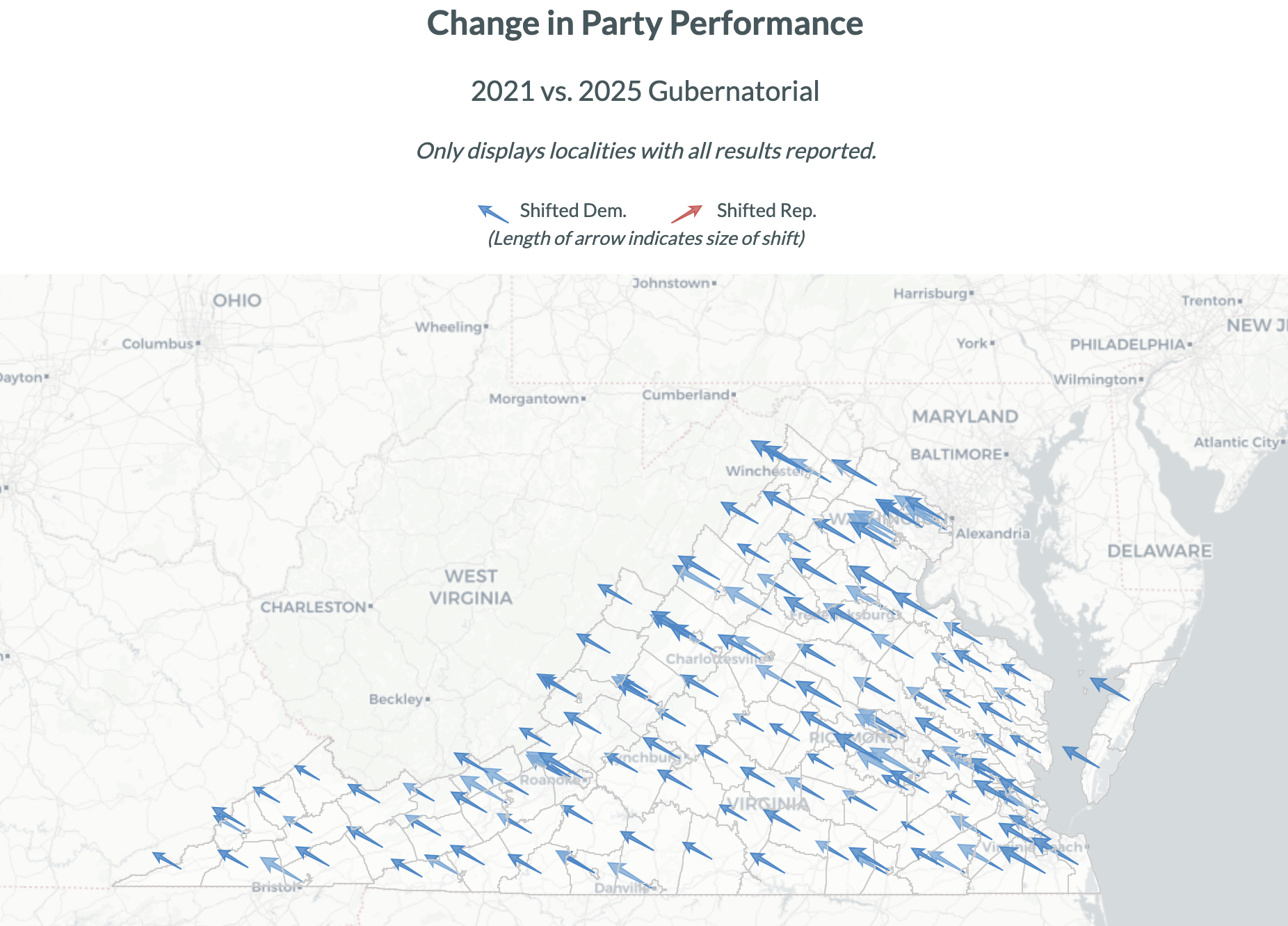Tuesday’s election results brought a steady stream of great news as Democrats racked up wins across the country. Democrats won the governorship in New Jersey, retained their 5-2 majority on the Pennsylvania Supreme Court, and flipped two statewide offices in Georgia that Democrats hadn’t won since 2000. A large majority of New Yorkers chose millennial mayor-elect Mamdani over the Trump-endorsed Cuomo. Voters in California easily passed Prop 50, designed to answer Republicans’ election map rigging in other states, and Maine voters rejected a vote-restricting ballot measure.
But our eyes were on Virginia, where Democrats flipped the offices of Governor, Lieutenant Governor, and Attorney General – and picked up a whopping 13 seats in their House of Delegates.
Following Trump’s first election, in 2016, it was Virginia that showed the first signs of a way back. As we detailed in 2017, Democrats rebounded with a five-point swing and a nine-point victory in the Governor’s race that year. The wave extended down the ballot, where Democrats picked up more than a dozen seats in the House of Delegates and came within a single vote of flipping the chamber outright. That election marked the start of a national trend, pointing to where and how Democrats would surge in 2018 and 2020.
Eight years later, Virginia has once again shown what’s possible with the right candidates, a fired up base, and a commitment to putting in the work. On Tuesday night, Democrats won the Governor’s race by a remarkable 15 points and expanded their narrow 51-48 House majority into a commanding 64-36 margin, a net gain of thirteen seats. The flips came from fast-growing suburban and exurban districts – Northern Virginia, Richmond’s outer suburbs, and Hampton Roads – areas once solidly red but now trending decisively blue. These communities are younger, more diverse, and more highly educated than ever, and their political shift shows no sign of slowing.
At the same time, every county in Virginia shifted left. Early results point to turnout as a significant factor – who turned out and who stayed home; we’ll share further analysis as detailed results are available.
Source: VPAP 2025 Election Results
What happened in Virginia in 2017 repeated in North Carolina just a year later. In 2018, Democrats flipped over a dozen legislative seats, broke the Republican supermajorities in both chambers of our state legislature, and proved that the same suburban surge could transform North Carolina.
Importantly, North Carolina’s 2018 blue wave was not an even statewide wave – it was heavily driven by increased left-leaning turnout leading to big swings in competitive legislative districts, where volunteer orgs like FLIP NC and others were out talking with voters about their concerns, about the stakes of these elections that most people knew very little about, and about why their vote mattered.
Now, Virginia has once again shown what’s possible when Democrats compete everywhere and organize year-round. The path in North Carolina is clear – take the Virginia blueprint and make it our own in 2026 by recruiting strong candidates, mobilizing fired-up voters, and delivering another blue wave.
The time to start is now. THIS Sunday, November 9, please join us in South Durham for our last canvass of 2025. Sign up to canvass here. Not up for canvassing? Join us for lit drop (no knocking, talking optional!), also available this Sunday, November 9th. Sign up to lit drop here.
And stay tuned – our statewide lit drop campaign will launch in December.


